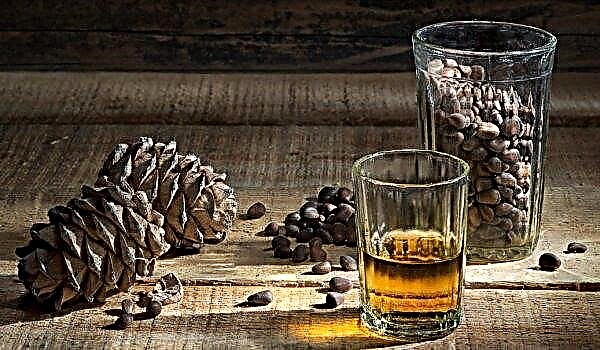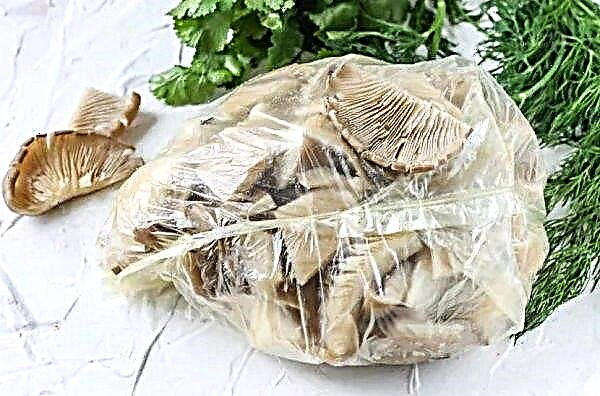Grain crops are known to mankind long before the beginning of our era. Wheat, barley, oats and rye occupy an important place in the diet. This article discusses the main differences between cereals from each other, the benefits of each of them for the body.
The similarity of cereals
Wheat, rye, barley and oats are all cereals cultivated by man. Plants have a similar structure:
- tall, hollow stalk;
- inflorescence in the form of an ear (in oats collected in a panicle of ears);
- leaves are narrow and long;
- caryopsis fruit;
- the outer shell of the grain is hard, the inner is soft.
 All these crops are divided into two types according to the method of cultivation: spring and winter. Any of the plants can be used as siderate to restore the structure and nutrition of the soil.
All these crops are divided into two types according to the method of cultivation: spring and winter. Any of the plants can be used as siderate to restore the structure and nutrition of the soil.
The listed cereals are used for food:
- The grains are ground into flour to make bread or flat cakes, or other pastries.
- A cereal is used to prepare a side dish or first courses.
- After processing, cereals are prepared for breakfast cereals.
- Cereals are the raw material for the manufacture of alcohol (alcohol production).
- Malt is made from grains for making beer.
Plant straw was used as a building material in ancient times. Now, the so-called silo, goes to feed agricultural animals, and straw serves as litter. Crushed grain is given to poultry feed.
The main differences between barley, wheat, rye and oats
Despite the great similarity, the plants are still different. The cultivation technique for cereal plants is almost identical, with the exception of minor subtleties. But the growing conditions for each culture are selected individually.

To compare external and biological features, a table is presented:
| Plant | External differences | Difference in growing conditions |
| Oats | The inflorescence is complex - a panicle collected from drooping single ears. The grain is elongated, gray-yellow | It tolerates frosts to -9 ° C, but does not like heat. Loving, not resistant to drought. The structure and composition of the soil is not demanding, provided that the acidity is 5-6 pH |
| Rye | Single spike inflorescence, flat. Grains are pressed to the stem, opposite. The form is elongated oval, the color is gray-yellow, brownish | It tolerates frosts up to -20 ° C, drought-resistant, does not like waterlogging. Soil composition does not matter, except wetlands, adapts to high acidity |
| Wheat | The grains on a mature spike sit alternately, more convex. The color is golden yellow, the shape is oval-round. | Heat and moisture loving, loamy or sandy loamy soils, flavored with humus or fertile black soil. Soil acidity 5.5-6 pH |
| Barley | The ear is short, grains are arranged alternately, convex. Round-oval shape with a sharp yellow-yellow finish | It withstands frosts down to -12 ° С, heat up to + 33 ° С. Drought tolerant, can grow on poor soils, but acidity is desirable neutral or slightly acidic |
Did you know? British scientists from Cardiff University after the experiments concluded that oatmeal improves brain function. A daily serving of porridge stimulates thinking, memory and concentration.
Chemical composition and nutritional value
The composition of nutrients in cereals is similar to each other, as is the BZHU.

All cultures are rich in minerals and vitamins, especially elements of group B:
- vitamins - B1, B2, B4, B5, B6, B9, E, H, PP;
- macrocells - potassium, calcium, silicon, magnesium, sulfur, phosphorus;
- trace elements - iron, cobalt, manganese, copper, selenium, molybdenum, chromium, zinc.
The table below shows the energy value of plant grains:
| Rye |
|
| Wheat |
|
| Oats |
|
| Barley |
|
Did you know? Barley is mentioned in many religious texts: the Bible, the Torah, as well as the Hindu Rigveda.
Benefits for the body
Nutritionists recommend including cereals in the diet at least 3 times a week. A cereal dish contains fiber, which “sweeps” undigested food, breakdown products of drugs, and toxins from the body. This fact has a positive effect on the digestive process and allows you to maintain normal weight. Each cereal has other qualities that are valuable to the human body.

- Useful properties of wheat:
- relieves inflammation and pain with rheumatism;
- normalizes blood sugar;
- contributes to the production of insulin;
- supports the work of the heart muscle;
- normalizes cholesterol;
- improves the functioning of the nervous system;
- reduces the risk of Alzheimer's disease;
- normalizes the work of reproductive organs;
- reduces the risk of cataracts;
- is the prevention of asthma;
- normalizes intestinal microflora;
- supports healthy skin and hair.
Wheat grains have long been used in the preparation of medicines for diseases of the gastrointestinal tract, genitourinary system and skin. Whole grain cereal is good for eating if you suspect kidney stones or gall bladder.
- The benefits of rye for the body:
- improves hematopoiesis function;
- normalizes the lymphatic system;
- improves digestion;
- supports the central nervous system;
- improves the adrenal glands;
- helps in the treatment of skin diseases;
- positively affects the condition of the oral cavity;
- strengthens muscle and bone tissue;
- improves transmission of nerve impulses.

In traditional medicine, decoctions of grain are used both internally and externally. Biologically valuable, given the composition of the plant, is kvass. Germinated rye sprouts promote weight loss, help restore vision and saturate the body with vitamins and minerals in its entirety.
Important! Before using homeopathic remedies, it is recommended to consult with your doctor. This is especially true for people with chronic diseases of the internal organs.
- Useful properties of barley:
- fights viruses and fungi;
- possesses astringent and expectorant effect;
- reduces the risk of heart disease;
- strengthens cartilage and bone tissue;
- promotes lactation in nursing mothers;
- maintains a balance of vitamins and minerals in pregnant women;
- accelerates cell regeneration processes;
- reduces the acidity of gastric juice.
 Barley contains less dietary fiber and starch than wheat and rye. Therefore, nutritionists recommend eating products for diabetics, patients with obesity. Barley grains are used in folk medicine and in cosmetology.
Barley contains less dietary fiber and starch than wheat and rye. Therefore, nutritionists recommend eating products for diabetics, patients with obesity. Barley grains are used in folk medicine and in cosmetology.- The benefits of oats:
- helps fight obesity;
- improves skin and hair, strengthens nails;
- lowers blood glucose;
- supports the female body during menopause;
- increases the elasticity of blood vessels;
- normalizes blood pressure;
- strengthens the immune system;
- improves the reproductive organs;
- eliminates insomnia and anxiety.
Women have long been using oatmeal in home cosmetology. From milled grains, masks and scrubs are prepared, which have a mass of beneficial effects. Decoctions and infusions are used for the prevention and treatment of the digestive system and respiratory system, dermatological problems. They soothe the skin well and relieve inflammation, both external and internal.
Possible harm and contraindications
The harmful properties of cereals are almost the same. Cereal dishes should not be consumed in large quantities, as this will lead to weight gain.
- In addition, it will provoke unpleasant side effects:
- bloating;
- heartburn;
- increased acidity;
- feeling of heaviness;
- constipation.
Important! It is strictly forbidden to eat foods containing cereals in large quantities to patients with celiac disease. All of the above cultures contain gluten.
Be careful with germinated grains.. They are certainly useful, since the content of valuable elements in the composition is maximum. But you need to buy a product for germination in a pharmacy, grain on the market and in food outlets can be processed with pesticides. One should inquire about the conditions for the germination and storage of such a product.
Thus, you can distinguish a culture by looking at the bush, and by the appearance of the grain. The main thing that unites cultures is the benefits that they bring to the body.












